In a world where software development and IT operations often clash like cats and dogs, DevOps practices emerge as the peacekeepers of the tech realm. These practices not only streamline workflows but also transform teams into well-oiled machines—minus the grease stains. By fostering collaboration between developers and operations, organizations can deliver software faster than you can say “continuous integration.”
Table of Contents
ToggleOverview of DevOps Practices
DevOps practices focus on integrating development and IT operations to improve collaboration and efficiency. These practices foster a culture that encourages teamwork among software developers, system administrators, and other stakeholders. Enhanced communication leads to faster issue resolution and a more responsive development cycle.
Continuous integration and continuous deployment (CI/CD) stand as central pillars of DevOps. CI/CD enables teams to automate testing and deployment, reducing manual errors and accelerating release cycles. These processes ensure that code changes are consistently merged and validated through automated testing.
Monitoring and feedback loops play a crucial role in DevOps, as they allow teams to gain insights into performance and user experience. Utilizing monitoring tools helps identify issues early, ensuring that teams can respond quickly to any challenges. Feedback from users and stakeholders also informs future development and operational decisions.
Infrastructure as Code (IaC) practices further enhance DevOps by automating infrastructure management. Teams can provision and manage their infrastructure through code, promoting consistency and reducing configuration drift. IaC also simplifies scalability and mitigates risks related to manual configurations.
Collaboration tools contribute significantly to the success of DevOps practices. Platforms for communication and project management facilitate information sharing among team members. By streamlining workflows, these tools ensure that everyone remains aligned on objectives and progress.
Embracing a culture of continuous improvement underpins effective DevOps practices. Teams regularly assess their processes and outcomes, seeking ways to optimize performance and enhance quality. This commitment to learning drives innovation and operational excellence across the organization.
Key Principles of DevOps
DevOps practices center around enhancing collaboration, automation, and continuous improvement in software development and IT operations. This section delves into essential principles that drive these practices.
Collaboration and Communication
Effective collaboration and communication are critical in DevOps. Enhanced teamwork among development, operations, and other stakeholders fosters shared responsibility for project outcomes. Regular cross-functional meetings encourage transparency and provide a platform for discussing challenges. Proactive communication tools promote real-time updates, allowing teams to address issues quickly. By breaking down silos, organizations improve information flow and decision-making. Collaborative practices lead to a more cohesive work environment that accelerates project delivery.
Continuous Integration and Deployment
Continuous integration and deployment (CI/CD) serve as a foundation for DevOps. Frequent code integration allows teams to detect errors early during the development phase. Automated testing within CI/CD pipelines enhances reliability, ensuring that only verified code progresses to deployment. Deployment becomes a seamless process, reducing downtime and allowing updates to reach users faster. Organizations benefit from shorter release cycles and improved product quality. The automation inherent in CI/CD practices minimizes manual errors, freeing up teams to focus on innovation and user experience.
Tools and Technologies in DevOps
Tools and technologies play a crucial role in implementing DevOps practices effectively. They enhance collaboration, automate processes, and ensure efficiency across development and operations.
Version Control Systems
Version control systems streamline code management and collaboration. Git, a widely used system, allows developers to track changes, manage code versions, and collaborate seamlessly. It supports branching and merging, enabling teams to work concurrently without conflicts. Subversion (SVN) serves as another option, providing a centralized repository model for managing projects. These systems not only maintain code integrity but also facilitate auditing and rollback capabilities, ensuring accountability in the development process.
Automation Tools
Automation tools significantly boost the efficiency of DevOps pipelines. Jenkins, a popular automation server, orchestrates continuous integration and delivery efficiently, facilitating automated testing and deployment. Puppet and Chef automate configuration management, simplifying infrastructure management by maintaining consistency across environments. Ansible excels in software provisioning and configuration management through simple, declarative configurations. These tools reduce manual effort, minimize errors, and accelerate release cycles, empowering teams to focus on innovation rather than repetitive tasks.
Challenges in Implementing DevOps Practices
Implementing DevOps practices presents significant challenges. Resistance to change among team members often hinders progress. Many employees may feel uncertain about new processes and tools, creating friction within the organization.
Cultural differences between development and operations teams can lead to misunderstandings. Trust issues between these teams often result in silos, reducing collaboration and communication. Without an aligned mindset, initiatives may falter.
Skill gaps among team members complicate matters further. Lack of familiarity with automation tools and CI/CD pipelines can stall implementation. Organizations must prioritize training and upskilling workers to bridge these gaps effectively.
Integration of existing tools with new DevOps practices can be complex. Compatibility issues may arise, leading to additional technical debt. Proper evaluation of tools is crucial for seamless integration and overall success.
Managing the speed of implementation poses another risk. Rapid changes can overwhelm teams and lead to burnout. Introducing new practices gradually can help maintain productivity and morale.
Monitoring and feedback have their challenges too. Gathering useful data and insights requires appropriate tools and methodologies. Inadequate monitoring systems can obscure issues, preventing prompt resolution and impacting performance.
Security concerns also emerge during the shift to DevOps. Incorporating security measures into CI/CD processes requires careful planning. Addressing security challenges ensures that rapid deployments do not compromise safety.
Each of these challenges highlights the need for a carefully structured approach. By emphasizing training, improving communication, and prioritizing security, organizations can navigate these hurdles effectively.
Best Practices for Successful DevOps Adoption
Effective DevOps adoption relies on key practices that enhance collaboration across teams. Communication remains a priority, as regular cross-functional meetings foster an environment of transparency. Automation of testing and deployment should also feature prominently in DevOps workflows. Continuous integration and continuous deployment streamline code releases, reduce errors, and speed up delivery.
Emphasizing Infrastructure as Code simplifies configuration management and offers significant scalability advantages. Monitoring systems provide real-time feedback, allowing teams to track performance and user experience. Integrating tools for version control, like Git or SVN, ensures seamless collaboration among developers, helping teams maintain code integrity.
Training team members on new practices is essential. Providing resources helps bridge skill gaps and supports a smooth transition. Cultural alignment between development and operations teams encourages shared responsibility, crucial for successful DevOps implementation.
Security measures must be woven into the CI/CD processes. Prioritizing security helps mitigate risks associated with rapid deployment cycles. Utilizing automation tools like Jenkins, Puppet, and Ansible enhances efficiency and reduces manual tasks, enabling teams to concentrate on innovation.
Leaders should focus on creating a culture of continuous improvement. Regular assessments of processes lead to optimization and better performance, ultimately driving innovation within the organization. Aligning these practices not only streamlines workflows but aligns the overall goals of development and operations teams.
Conclusion
Adopting DevOps practices can significantly transform how organizations approach software development and IT operations. By fostering collaboration and promoting automation teams can streamline workflows and enhance efficiency. Embracing continuous integration and deployment enables quicker releases while minimizing errors.
Monitoring and feedback loops are vital for maintaining performance and improving user experiences. Infrastructure as Code simplifies management and scalability, ensuring consistency across environments. Overcoming challenges such as resistance to change and skill gaps is essential for successful implementation.
Ultimately a culture of continuous improvement drives innovation and optimizes processes. By prioritizing effective communication and integrating security measures organizations can harness the full potential of DevOps, leading to successful project outcomes and a more agile development environment.







